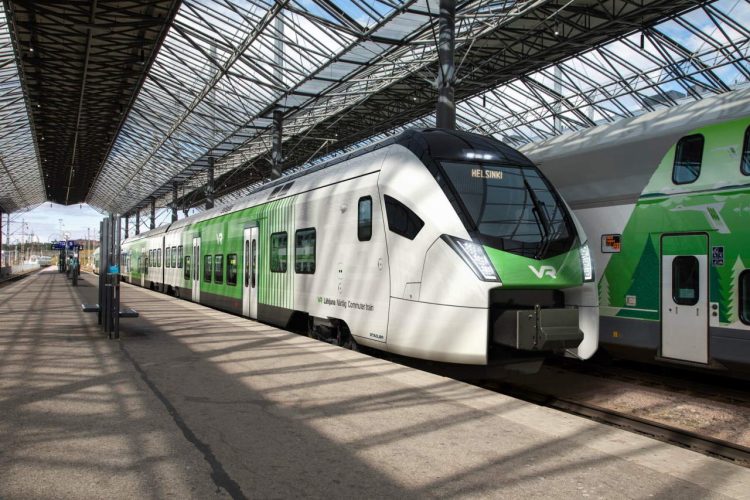Stadler has signed a contract with the ASPIRE Engineering Research Center at Utah State University (USU) to develop and test North America's first battery-powered passenger train based on Stadler's FLIRT Akku model.
The FLIRT is a single-decker, lightweight multiple-unit train for regional transport, and the Akku model is its battery-operated version. The vehicle has a normal operating range of around 100km but one of the trains holds the world record for the longest journey travelled by a regional train in battery-only mode without additional charging having covered 224km in battery-only mode.

As well as purely electric and battery-electric versions, there are FLIRT versions that run on hydrogen, and Stadler is currently developing the first hydrogen-powered FLIRT for the San Bernardino County Transportation Authority (SBCTA). It has already sold over 110 FLIRT Akku vehicles, and in Germany, its battery-powered trains have replaced diesel fleets in the states of Schleswig-Holstein, Rhineland-Palatinate, and Mecklenburg-Western Pomerania.
Stadler's contract with ASPIRE is to develop, build, and test a two-car multiple-unit battery-powered version, which will provide CO2 emission-free rail transport on non-electrified lines, and has been modified for the American market. To adapt the vehicle to make it suitable for the American infrastructure and comply with national regulations will require extensive research and development work.
Whilst Stadler will concentrate on the train's design and production of the train, ASPIRE will develop its trackside charging infrastructure. . During extensive test runs, ASPIRE, USU and Stadler hope to gain important insights into how battery-powered trains can contribute to the decarbonisation of American passenger transport.
Dr. Regan Zane, Director of the NSF ASPIRE Engineering Research Center, said: “We are honoured to partner with Stadler on this groundbreaking project. Success will bring design and manufacturing jobs to Utah. It will also chart the path to electrified commuter and light rail systems along the Wasatch Front.
“The battery-electric train solution will improve air quality and reduce operating costs while supporting shared charging infrastructure with trucks, buses, and cars. We're beyond pleased to have such an incredible opportunity to be working with a world class manufacturer here in the state.”
Martin Ritter, CEO of Stadler US, Inc. , said: “With little to no electrified routes in the North American public rail transit system, a battery train is a great zero-emission alternative to diesel-powered vehicles. After a contract for a hydrogen-powered FLIRT for California, we are now excited to bring our battery solution to the United States.
“In ASPIRE we have found an excellent partner to develop the most efficient and fully integrated system for environmentally friendly mobility. We are proud to be able to work with local talent to design and build this technology here in Utah.”
Mike Schultz, Majority Leader, Utah House of Representatives, added: “The Utah Legislature is committed to developing strong public-private partnerships like this, that result in innovative solutions to critical issues facing our state. We are thrilled to be partners in this project and look forward to its success.”
The UK could do with electric-battery and hydrogen powered trains from Stadler to replace older diesel multiple unit trains used in Southwest England, West Wales, North Wales, North of Scotland, Southwest Scotland, Northeast England and Northwest England.
Why stop with those regions–retrofit the FLIRTs running on the shorter branch lines in East of England, to make them Akku flirts with batteries. Examples such as the Bittern line and the Gainsborough line. Norwich station and Crown point have OHE (and the trains in use already have pantographs) for in day and night-time charging, and the GEML OHE could be extended a bit up the Sudbury branch for top up charging (and maybe also equip environs of Sudbury station with OHE for in day charging when the train is waiting at that terminus).